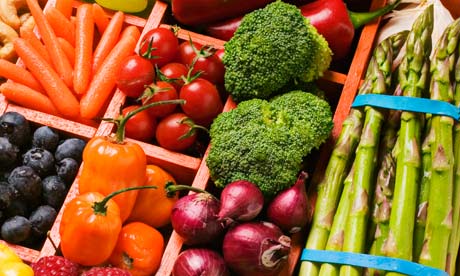 |
| Cereals advertised for their Calcium, Zinc and Iron content |
Colored breakfast cereals are attractive to kids, especially with those cartoon characters on their packages. Other than their high content of sugar and sodium, and putting aside that they are advertised by mentioning their high calcium, iron, zinc, fiber and ‘fruity’ content, my concern here is their dye content!
Testing Food Dyes
Food colorings are tested for safety by different parties and sometimes views on food color safety can get quite controversial.
- In Europe, E numbers are given to European Union-approved natural and synthetic dyes. In fact, in European countries these colorings are considered hazardous until they can be proven safe.
- In the US, FD&C are given to FDA-approved synthetic food dyes that do not exist in nature. In the US, it's totally the opposite >> The colorings are safe until proven otherwise!
So companies that do business in Europe use natural and safe colorings; however, they use harmful and synthetic ones elsewhere! And guess what, yes; Lebanon is considered an "elsewhere" country.
Allowed Common Artificial Food Dyes
In the USA, the following seven artificial colorings are permitted in food as of 2007. You can see E number, FD&C number or the dye’s name. So when you check your label, you can find any of the 3.
- FD&C Blue No. 1 or E133 –Brilliant Blue (blue shade)
- FD&C Blue No. 2 or E132 – Indigotine (inidigo shade)
- FD&C Green No. 3 or E143 – Fast Green FCF (turquoise shade)
- FD&C Red No. 40 or E129– Allura Red AC. This dye is approved by the EU in general, but Switzerland already banned it and the UK is on its way!
- FD&C Red No. 3 or E127 – Erythrosine
- FD&C Yellow No. 5 or E102 – Tartazine
- FD&C Yellow No. 6 or E110 – Sunset Yellow FCF (orange shade so it can also be called Orange E110). Now this is approved in the US; however, EU is considering its ban while Norway already banned it!
- [Blue no.1, red no.40, yellow no.5 and yellow no. 6 being the most popular]
Disallowed Common Artificial Food Dyes
The following 9 dyes have been disallowed by the FDA because of their adverse effects so keep them in mind, and let’s hope we don’t see them in any of our foods!
- FD&C Red No. 2 – Amaranth
- FD&C Red No. 4
- FD&C Red No. 32
- FD&C Orange No. 1
- FD&C Yellow No. 1, 2, 3 and 4
- FD&C Violet No. 1
Artificial Dyes Health Concerns
Certain artificial food dyes have been shown to be carcinogenic to animals, affect mood and intensify ADHD while few are associated with fertility. You can pick your favorite. Now these studies are not conclusive yet, but the fact many are showing weak to moderate association between the dyes and the suggested health concern while facing a lot of “food politics” pressure, is enough of a concern to me!
- The FDA requires that Yellow No. 5 be clearly labeled on food packaging along with other ingredients. This label is just indicating Yellow 5 is in the food. This is not a warning label so now you’re warned.
- According to the Mayo Clinic, colorants that may increase hyperactive behavior include: Yellow No. 6, Yellow No. 10, Yellow No. 5 and Red No.40. So even though, these are allowed by the FDA, studies are showing that they might have hazardous effects!
- According to the Center for Science in the Public Interest, food coloring such as Blue No. 1, Red No. 40, Yellow No. 5 and Yellow No. 6 cause allergic reactions. Yellow food No. 5 has triggered asthma episodes in children. Red No. 40 may cause skin conditions such as eczema. Yellow No. 2 has been connected with male sterility and ADHD. Blue No. 1 and Blue No. 2 used in beverages and often in pet food have been associated with brain tumors in animal studies and Red No. 3 is linked with thyroid tumors. It’s quite the mess! Actually, according to the Center for Science in Public Interest, artificial dyes are best avoided. They also have a "Food Dyes and Behavior Report Form" to fill out if your child shows any change of behavior when food colorants are ingested.
Natural Food Dyes
 |
| Some brands have natural food dyes |
- E150 - Caramel coloring made from caramelized sugar, used in sodas
- E160b - Annatto: a reddish-orange dye made from the achiote seeds
- E140 - Chlorophyll: a green dye made from algae
- E120: Cochineal a red dye derived from the cochineal insect
- E100 – Turmeric from curcuminoids
- E160a- Saffron (caratenoids) for a yellow to orange color
- E160c - Paprika
- Betanin extracted from beets to give a bluish-red to brown color
Natural food colors, due to their organic nature, can sometimes cause allergic reactions and anaphylactic shock in sensitive individuals. Coloring agents known to be potential hazards include annatto and cochineal. However, natural colors are not required to be tested nor mentioned on the label in the US!
Colored Cereals in Lebanon
Now, long story short, I found these colorings in 6 different colored cereals in Lebanon:
- Artificial colorings - Yellow E 102 (No. 5), Yellow E 110 (No. 6), Blue E 133 (No. 1), Red E 129 (No. 40)
>> Although all these have been approved in the US, the Center for Science in Public Interest advises that they are best avoided! They are under the "Unsafe in amounts consumed or is very poorly tested and not worth any risk" category. Red 40 and Yellow 6 are being phased out in some European countries. - Natural colorings - Turmeric, Paprika, Spinach, Carrots, Blackcurrant
>> All shown to be safe.
Food dyes are lurking everywhere in our diets!They can be found in granola bars, candies, jelly beans, chocolate, beverages, sodas, cakes, chewing gums, lollipops, syrups, icings, jams, dessert powders, ice cream and puddings. These could be quite obvious due to their flashy colors, but hey, colorants can be found in pale colored cereals, cheeses, chips and dips too! So you gotta become a label reader, especially for foods that you consume regularly. Don’t be fooled with words like ‘natural’ and ‘fruity’. You’ve become familiar with those names and numbers now, so watch out for them and try to limit your intake of processed foods.
Info Sources







